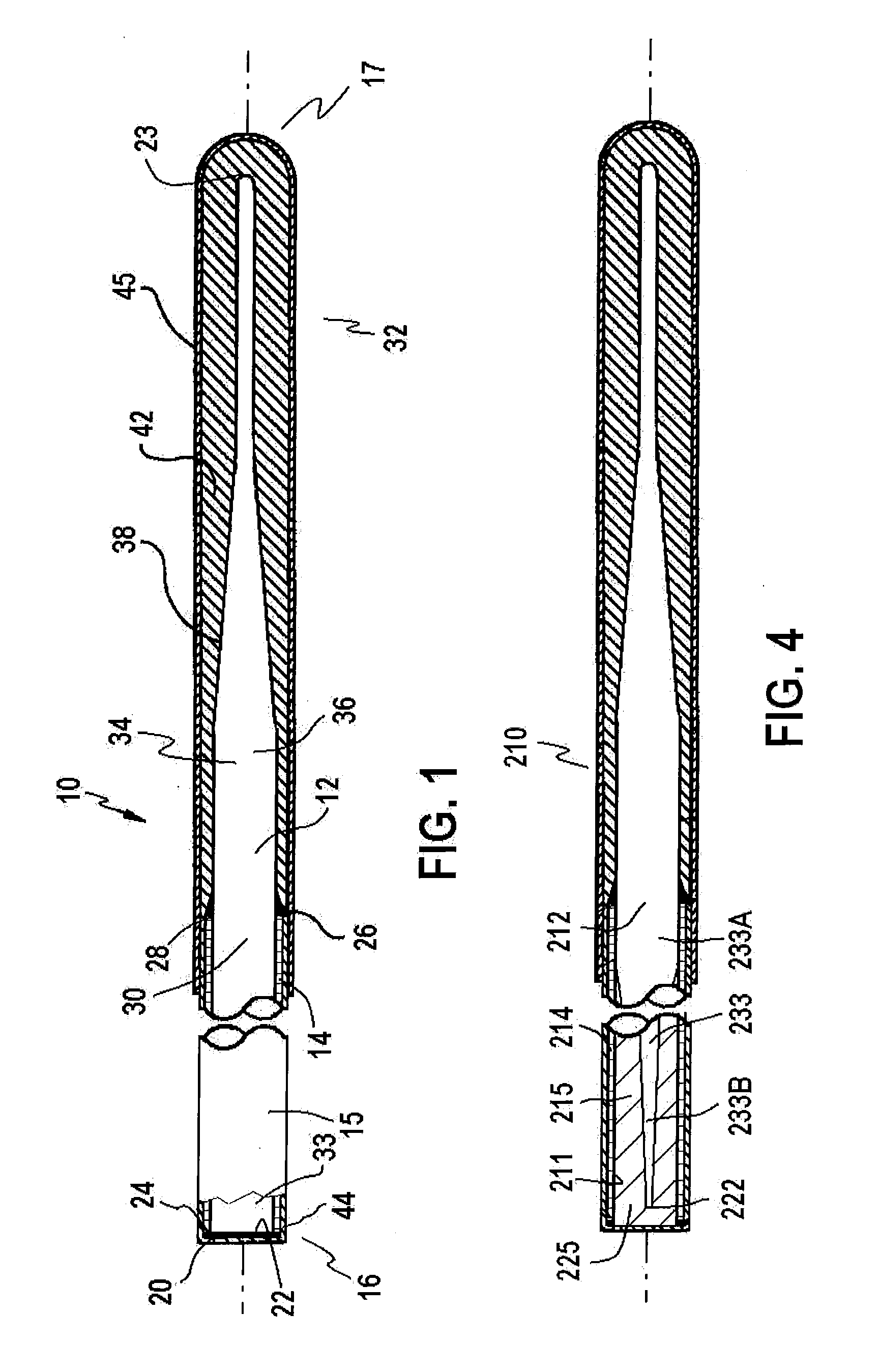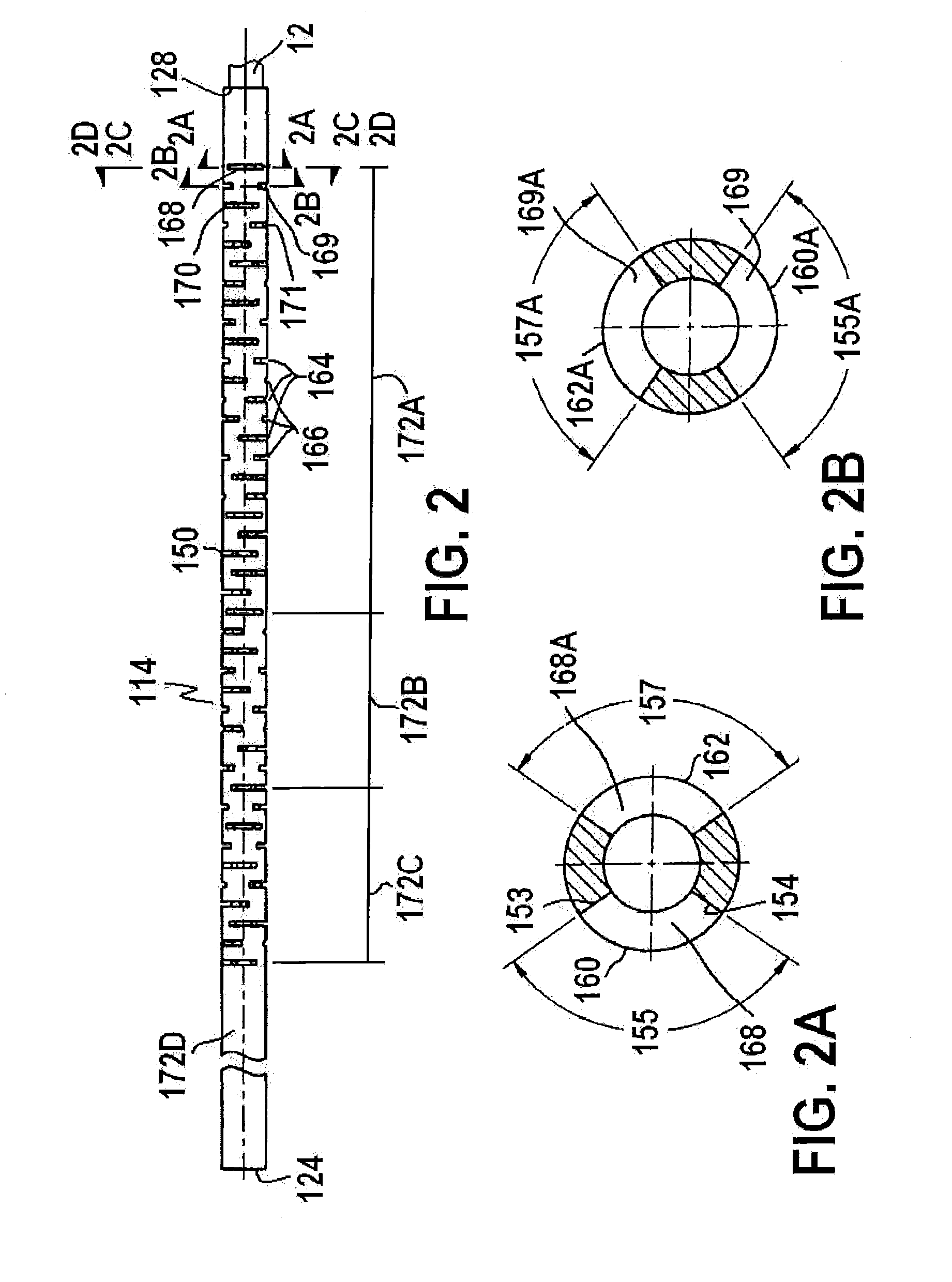Wire guide with cannula
a wire guide and cannula technology, applied in the direction of guide wires, manufacturing tools, catheters, etc., can solve the problems of excessive wear of drawing equipment, difficult and expensive combination of drawing and heat-treatment and/or pressure-treatment of cladding assemblies, damage to vessel linings, etc., to achieve sufficient pushability, sufficient flexibility and kink resistance, the effect of greater stiffness
- Summary
- Abstract
- Description
- Claims
- Application Information
AI Technical Summary
Benefits of technology
Problems solved by technology
Method used
Image
Examples
Embodiment Construction
[0018]In accordance with an embodiment of the present invention, a wire guide system includes a wire guide having sufficient flexibility and kink resistance, as well as sufficient pushability for use in a body vessel of a human or animal patient (“patient”).
[0019]The terms proximal and distal are used herein to refer to portions of a wire guide. As used herein, the term “distal” is defined as that portion of the wire guide closest to the end of the wire guide inserted into the patient's body lumen. The term “proximal” is defined as that portion of the wire guide closest to the end of the wire guide that is not inserted into the patient's body lumen. The terms distally and proximally are used herein to refer to directions along an axis joining the proximal and distal portions of the wire guide (“axial direction”). For example, proximal movement is movement towards the proximal portion of the wire guide. Distal movement is movement towards the distal portion of the wire guide.
[0020]Th...
PUM
| Property | Measurement | Unit |
|---|---|---|
| size | aaaaa | aaaaa |
| diameter | aaaaa | aaaaa |
| diameter | aaaaa | aaaaa |
Abstract
Description
Claims
Application Information
 Login to View More
Login to View More - R&D
- Intellectual Property
- Life Sciences
- Materials
- Tech Scout
- Unparalleled Data Quality
- Higher Quality Content
- 60% Fewer Hallucinations
Browse by: Latest US Patents, China's latest patents, Technical Efficacy Thesaurus, Application Domain, Technology Topic, Popular Technical Reports.
© 2025 PatSnap. All rights reserved.Legal|Privacy policy|Modern Slavery Act Transparency Statement|Sitemap|About US| Contact US: help@patsnap.com



